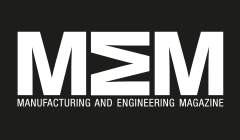AMRC Launches AMOS Project to Develop Pioneering Additive Manufacturing Repair Technique for Aerospace Industry

Experts in additive manufacturing at the Nuclear Advanced Manufacturing Research Centre (AMRC) are leading the way on a global scale in respect of developing pioneering repair and maintenance technologies for the aerospace industry. The research has been dubbed the AMOS project, a somewhat smaller a mouthful than Additive Manufacturing Optimisation Simulation platform for repairing and remanufacturing of aerospace components. It combines the intelligence, experience and resources of key manufacturers and researchers in Europe and Canada, and is led by University of Sheffield AMRC. The project is primarily geared toward exploring the potential of different direct energy deposition methods. The techniques entail combining conventional welding tools with automated control technologies with a view to increasing the accuracy with which metal powder or wire can be both deposited and melted. Since all manner of direct energy deposition techniques are evident across businesses within the aerospace sector â favoured for their ability to precision-manufacture parts to a degree elsewhere unseen â such research could provide the opportunity for further sector development and even open up AM technology to neighbouring sectors. The AMOS project will look specifically at those technologies already in use by partner or available on the market. Processes up for investigation and potential improvement include the wire-feed gas tungsten arc process, currently utilised for manufacturing the Nuclear AMRCâs bulk additive cell. Indeed, the Nuclear AMRC forms a key driver for the research and experts may well look into further technologies made use of by the research hub, including other AM techniques such as powder diode laser. From their investigations and research, industry professional and scientists alike are hoping to identify a way in which AM technology can be used to repair key aerospace components like landing gear and turbine blades. If found successful, such innovation could reduce both the time and cost associated with repair and maintenance works considerably. The initiative would could also improve the environmental identity of the sector as a whole, minimising material wastage during the process and, furthermore, prolonging the life of components which are both expensive to manufacture and properly dispose of. Dr Rosemary Gault, European Project Coordinator at the University of Sheffield AMRC was keen to stress the importance of the research, highlighting that while the sector is wholly dedicated to innovation, particularly in additive manufacturing, there is little focus on developing technologies specifically for repair and maintenance. Hoping to fill the gap, the AMOS project will inspect closely the various stages and aspects involved within the additive manufacturing process. Of significant interest will be how to maintain the integrity of the metal deposited as well as how to improve the precision of the deposition process, itself. With the help of technology specialists, researchers will also be looking to identify the advantages that automated control technologies represent to additive manufacturing technology in addition to fine-tuning the assembly of the net to produce a final, seamless â and therefore more durable â shape. As a final aside, and perhaps as a result of those findings, the AMOS project is expected to draw conclusions as to how strategies of additive manufacturing repair can be incorporated within the design of components in order to further improve efficiencies and lengthen the life cycle of parts. As such, it may well mark the creation of industry-complaint, best practice method with which to repair and maintain aerospace parts. The AMOS project consortium comprises a total of nine partners, spanning the globe from Canadian universities â McGill and Ottawa, and three further aerospace manufacturers, to Franceâs Central de Nantes and DPS. Also in the line-up are Swedenâs GKN Aerospace Engine Systems and, of course, the UKâs AMRC. It is thus made up of some of the biggest names in the sector and brings together the knowledge and specialisms of top research organisation, tier one manufacturers, and additive manufacturing and technology professionals. With such a broad range of high level expertise, it is unlikely the project will prove without positive conclusion.


